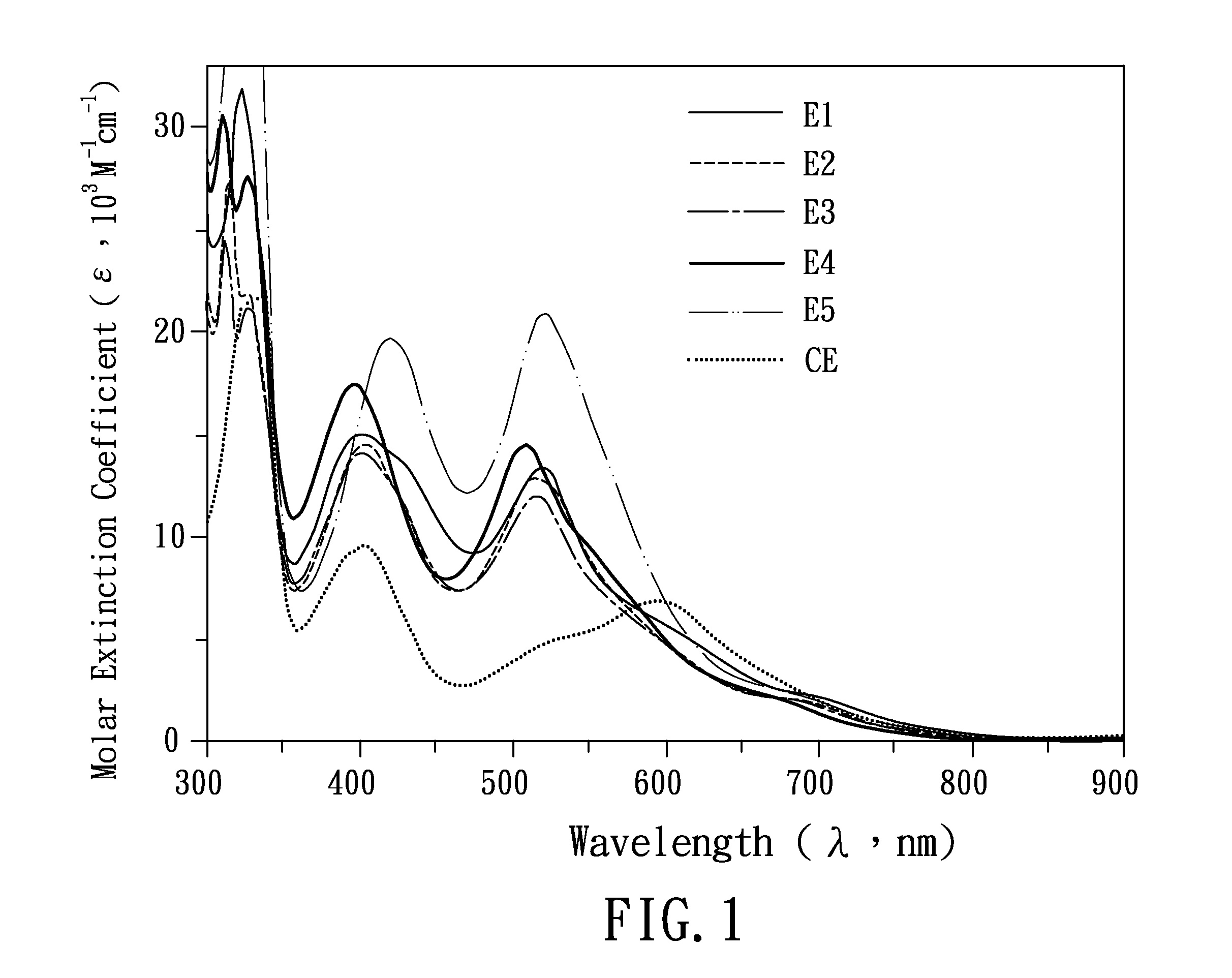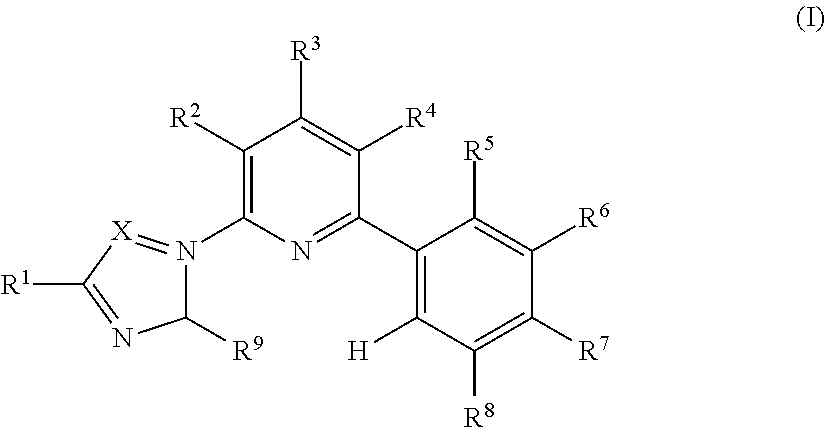2-phenyl-6-azolylpyridine-based ligand and group viii transition metal complex
a transition metal complex and ligand technology, applied in the field of pyridine-based compounds and metal complexes containing pyridine-based compounds, can solve the problems of insufficient visible light absorption in visible and near infrared light regions, poor photoelectric conversion efficiency, etc., to improve photoelectric conversion efficiency, wide light absorption, and the effect of long li
- Summary
- Abstract
- Description
- Claims
- Application Information
AI Technical Summary
Benefits of technology
Problems solved by technology
Method used
Image
Examples
synthesis example 1
[0070]The colorless oily liquid of Preparation 1 (0.68 g, 2.5 mmol), 6-acetyl-2-bromopyridine (0.50 g, 2.5 mmol) and tetrakis(triphenylphosphine)palladium(Pd(PPh3)4, 144 mg, 0.13 mmol) were added in a 100 ml single neck bottle followed by adding THF (25 ml) and a potassium carbonate solution (potassium carbonate (0.69 g) in deionized water (5 ml)) to obtain a mixture. The mixture was heated under reflux for 16 hours under a nitrogen gas atmosphere. After the reaction was finished, the mixture was cooled to room temperature, followed by removing solvent by virtue of reduced pressure distillation to obtain a distilled mixture. Then, the distilled mixture was added with dichloromethane and water for extraction. The dichloromethane layer was collected and added with magnesium sulfate to remove water. The dichloromethane layer was then filtrated and the filtrate was collected. Next, the filtrate was concentrated by means of reduced pressure distillation to obtain a yellow crude product. ...
synthesis example 2
[0076]2-bromo-6-cyanopyridine (424 mg, 2.3 mmol), 4-(trifluoromethyl)phenylboronic acid (440 mg, 2.3 mmol) and Pd (PPh3)4 (134 mg, 0.12 mmol) were added in a 100 ml single neck bottle, followed by adding THF (30 ml) and a potassium carbonate solution (potassium carbonate (0.96 g) in deionized water (7 ml)) to obtain a mixture. The mixture was heated under reflux for 6 hours under a nitrogen gas atmosphere. After the reaction was finished, the mixture was cooled to room temperature, followed by removing solvent by virtue of reduced pressure distillation to obtain a distilled mixture. Then, the distilled mixture was added with dichloromethane and water for extraction.
[0077]The dichloromethane layer was collected and added with magnesium sulfate to remove water. The dichloromethane layer was then filtrated and the filtrate was collected. Next, the filtrate was concentrated by means of reduced pressure distillation to obtain a yellow crude product. The resultant yellow crude product was...
synthesis example 3
[0082]2-bromo-6-cyanopyridine (0.50 g, 2.7 mmol), the colorless oily liquid of the preparation 1 (0.89 g, 3.3 mmol) and Pd(PPh3)4 (158 mg, 0.14 mmol) were added into a 100 ml single neck bottle, followed by adding THF (30 ml) and a potassium carbonate solution (potassium carbonate (0.94 g) in deionized water (7 ml)) to obtain a mixture. The mixture was heated under reflux for 4 hours under a nitrogen gas atmosphere. After the reaction was finished, the mixture was cooled to room temperature, followed by solvent removal by virtue of reduced pressure distillation to obtain a distilled mixture. Then, the distilled mixture was added with dichloromethane and water for extraction. The dichloromethane layer was collected and added with magnesium sulfate to remove water. The dichloromethane layer was then filtrated and the filtrate was collected. Next, the filtrate was concentrated by means of reduced pressure distillation to obtain a yellow solid product. The yellow solid product was subje...
PUM
 Login to view more
Login to view more Abstract
Description
Claims
Application Information
 Login to view more
Login to view more - R&D Engineer
- R&D Manager
- IP Professional
- Industry Leading Data Capabilities
- Powerful AI technology
- Patent DNA Extraction
Browse by: Latest US Patents, China's latest patents, Technical Efficacy Thesaurus, Application Domain, Technology Topic.
© 2024 PatSnap. All rights reserved.Legal|Privacy policy|Modern Slavery Act Transparency Statement|Sitemap



